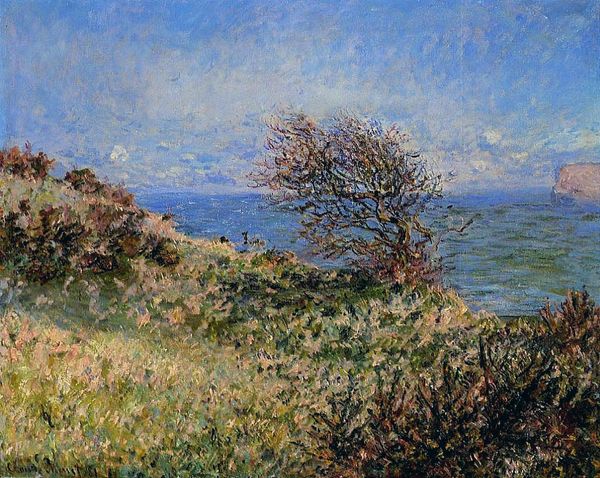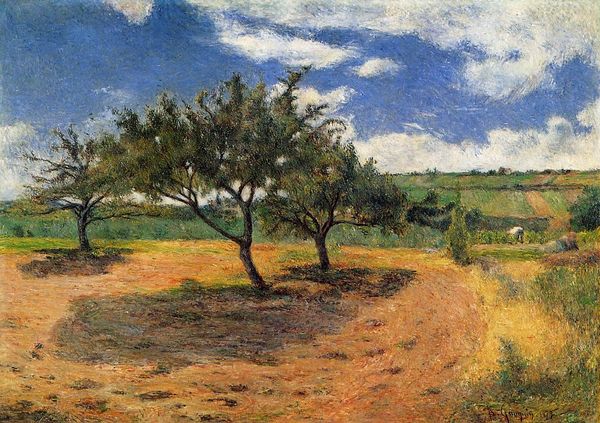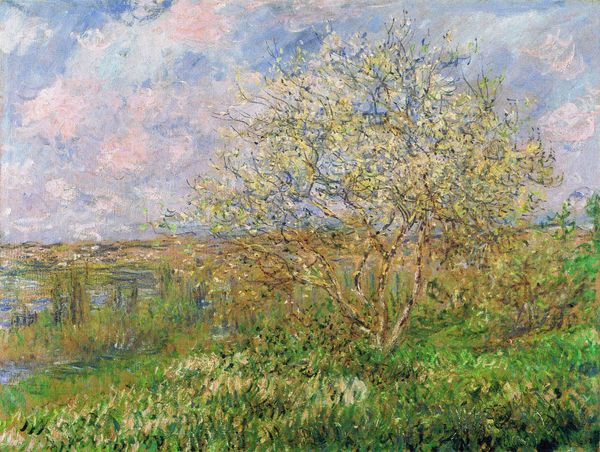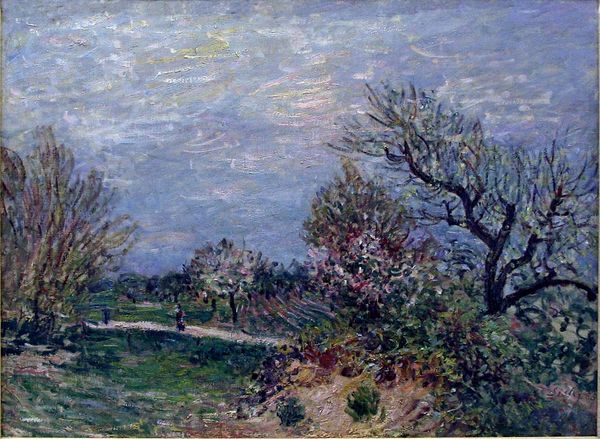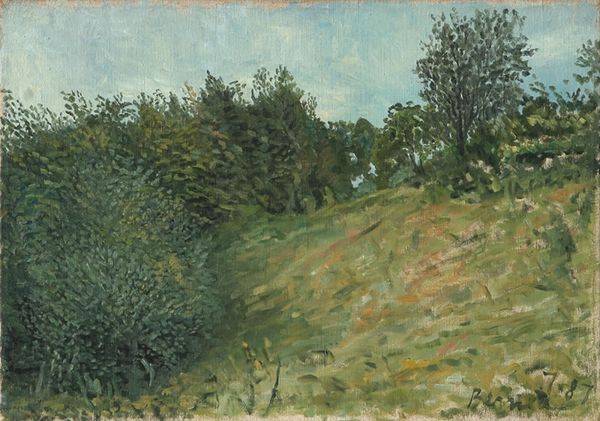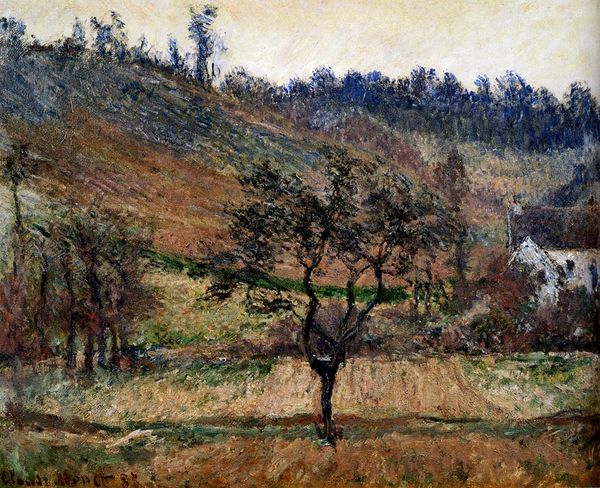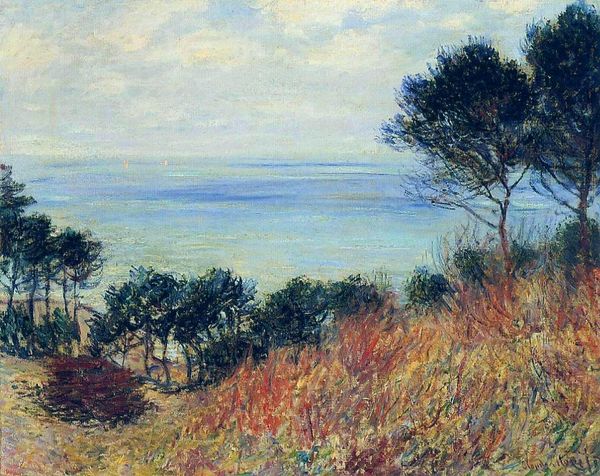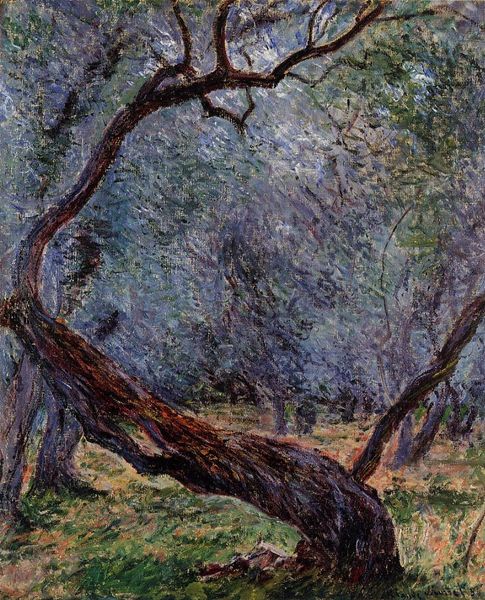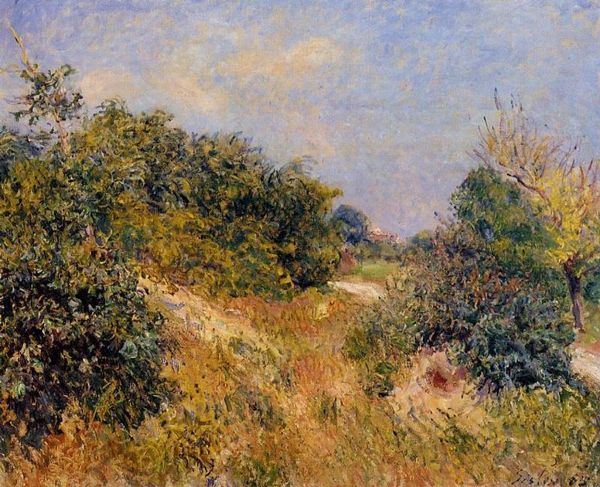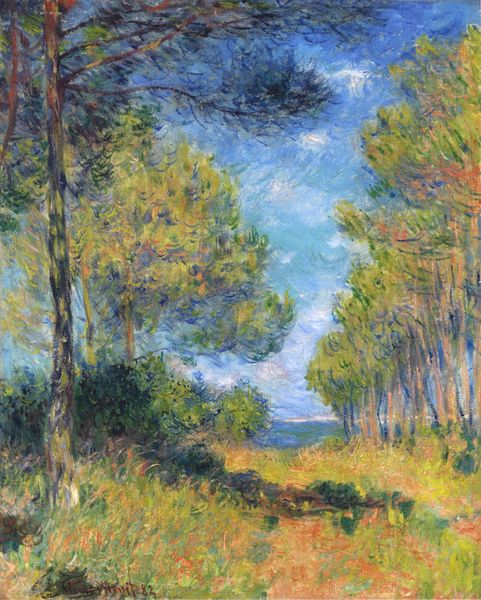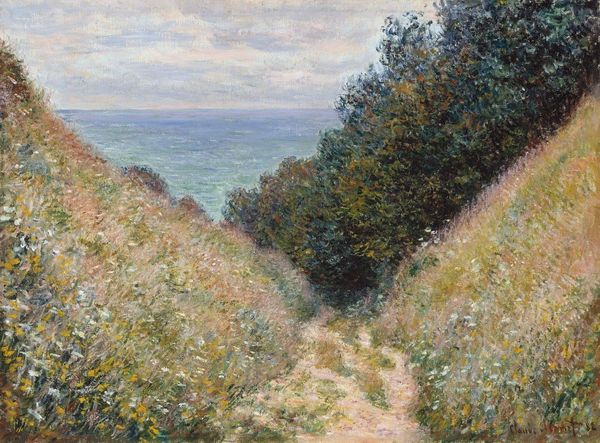
plein-air, oil-paint
#
impressionism
#
plein-air
#
oil-paint
#
landscape
#
seascape
Copyright: Public domain
Editor: Here we have Monet's "On the Coast at Trouville" from 1881, created with oil paint, likely en plein air. The solitary tree caught in the wind really stands out to me. What elements do you find most compelling? Curator: I'm drawn to Monet’s radical approach to painting itself. Look at how the brushstrokes render not just the scene, but the very act of observing. Plein air wasn’t just a stylistic choice; it was a labor-intensive process. What considerations do you think influenced this process of taking the materials, easel, paints, canvas directly into the natural setting? Editor: Well, it let him capture the light and atmosphere instantly! The speed seems essential. But it also had to affect his relationship to his work somehow? Curator: Precisely! Consider the material cost, and time needed for each canvas. There's an implication of both leisure and labor inherent in his choices. Who had access to those resources, and why would capturing fleeting atmospheric conditions in paint become so desirable at that moment in history? It's as if the finished painting becomes less about representation and more about documenting a very specific performative moment in which the scene, painter and materials became a form of social record. Editor: That is a completely new perspective! I guess I thought it was all about light. Curator: The materiality reframes Impressionism. It pushes us to see not just pretty landscapes, but reflections on the social dynamics embedded within artistic production itself. The painting itself became a sort of performance. Editor: That adds a new dimension to understanding it; beyond just visual pleasure but considering it as an economic and cultural artifact. Thanks for this reframing!
Comments
No comments
Be the first to comment and join the conversation on the ultimate creative platform.
